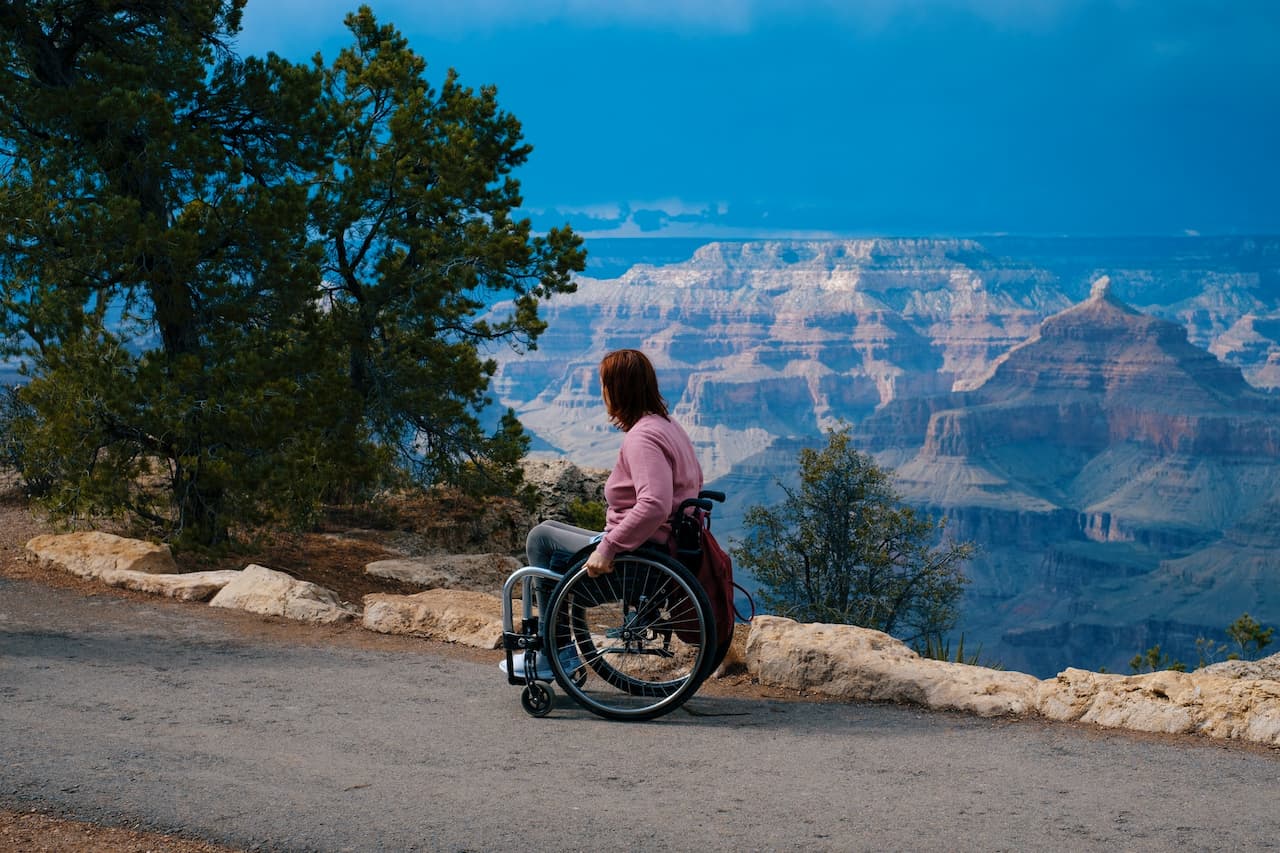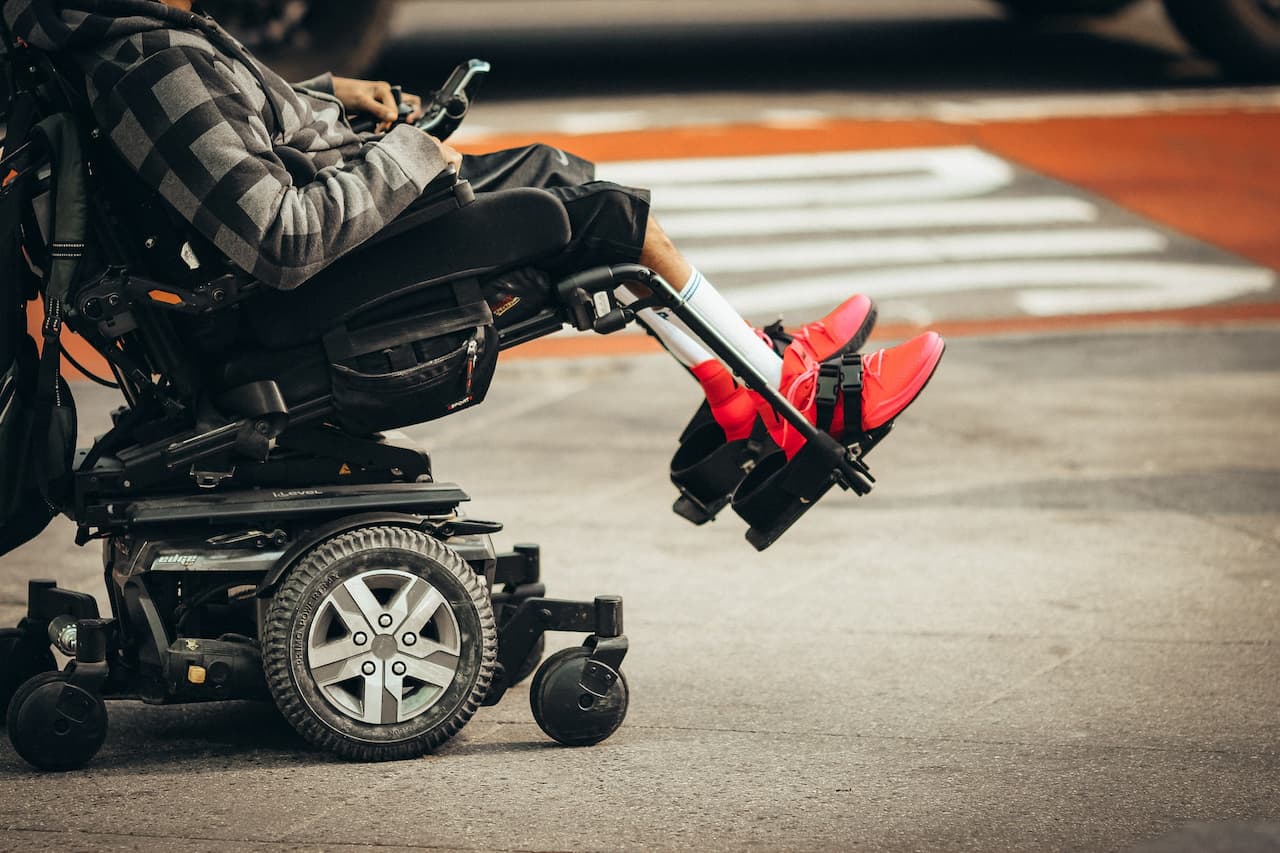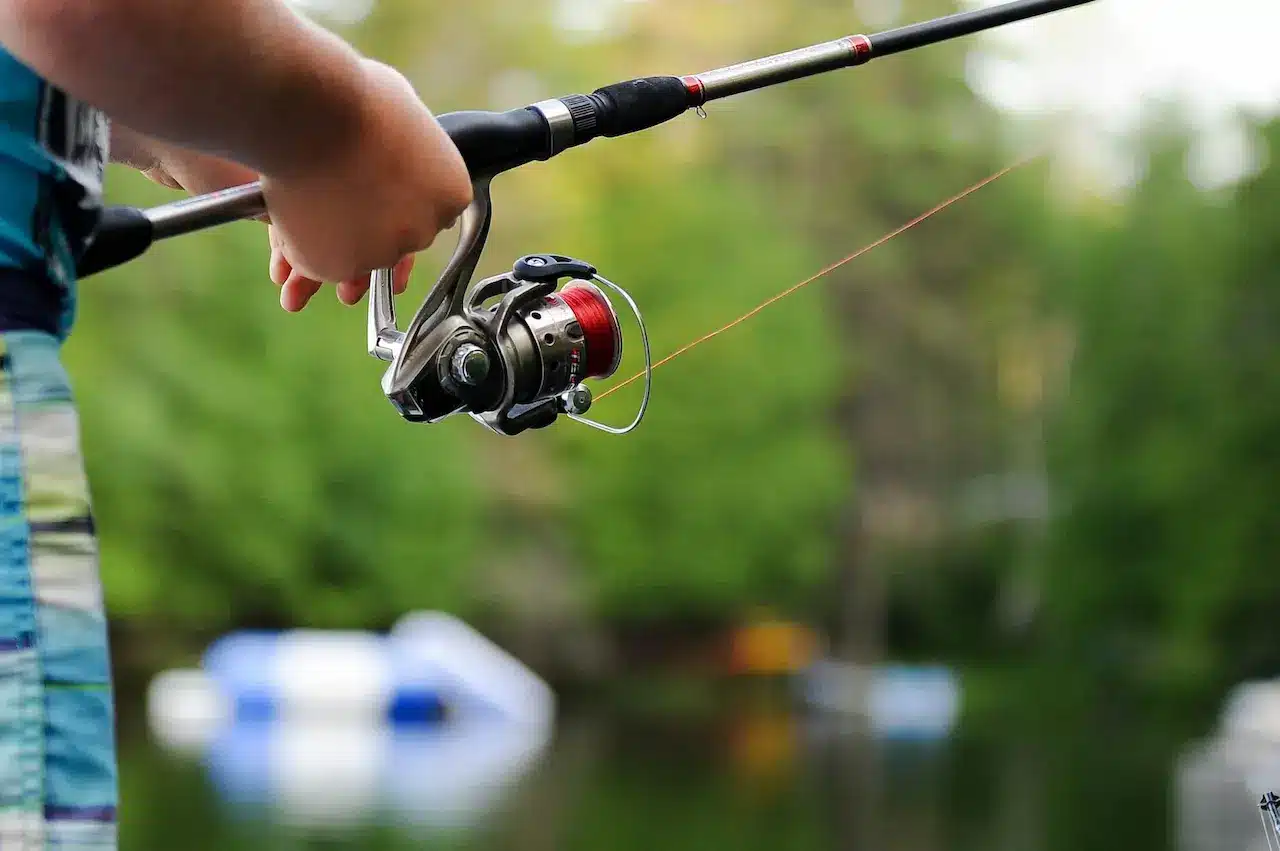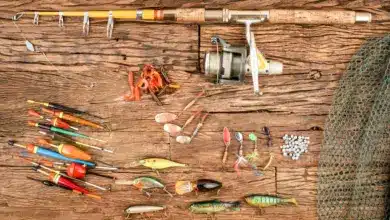Participating in activities like fishing, hunting, archery, and off-road exploration provides tremendous health and social benefits for people with disabilities. Advances in specialized gear and technology have made these traditionally challenging pastimes more adaptable and accessible.
This allows people facing mobility limitations, fatigue, or loss of strength to enjoy outdoor recreation they may have thought impossible. In this article, we will dive deeper into the world of adaptive sporting equipment engineered for inclusive adventure in the great outdoors.
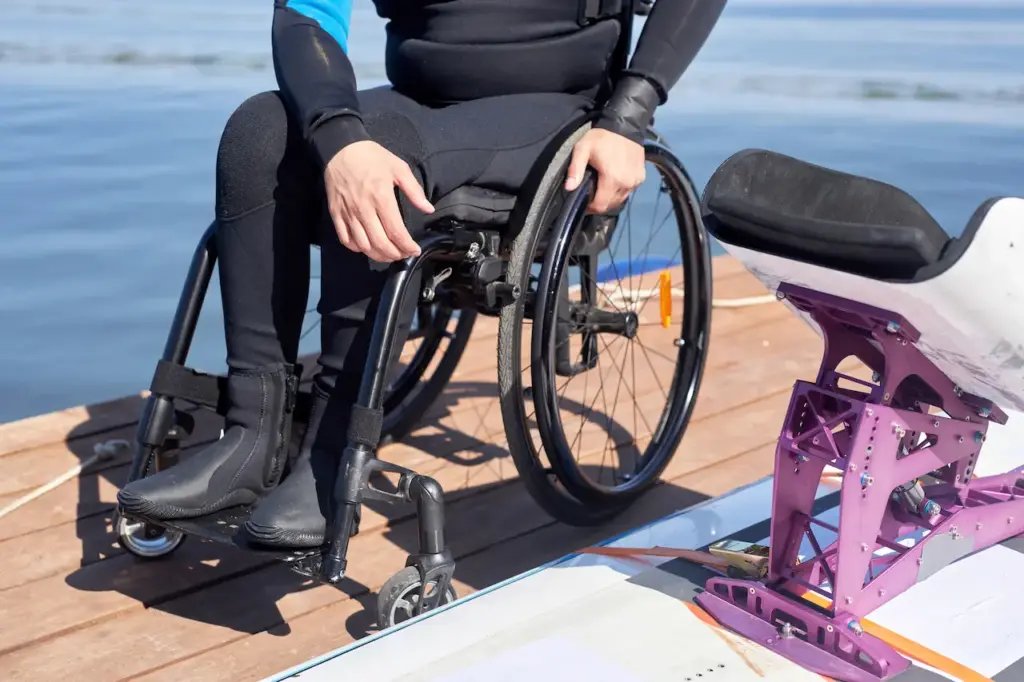
Adaptive Fishing Equipment
Fishing promotes stress relief, social bonds, active lifestyle incentives, and patience while connecting people to nature’s beauty. Adaptive rods, reels, boarding platforms, and other assistive devices open up the rich experiences of angling to more individuals facing physical limitations.
Fishing Rod Holders
Grasping and controlling heavy fishing rods for hours strains muscles exacerbates tremors, and causes rapid fatigue for some anglers. Rod holders provide stability assistance by securely mounting poles and allowing hands-free operation.
This conserves arm strength for making the perfect cast. Models feature adjustable angle settings, soft rod clamps, tablet mounts, and compatible rail mounting for boats and shore fishing:
- Clamp holders attach to docks, railings, and boat gunnels with padded jaws that protect rods during hooked fish runs. Rubber coatings prevent rod slippage while fighting feisty gamefish. Dual vertical posts accommodate multiple rods.
- Free-standing rod mounts featuring weighted triangular bases provide portable, stationary stands for shoreline fishing. Telescoping legs with stake tips add stability in sand or soil. Angled rests cater to spinning, baitcasting, and fly fishing poles with fastening straps.
- Wheelchair & walker rod holders integrate mounting brackets for mobility devices. These allow impaired anglers to navigate shorelines independently while a holder carries the rod hands-free. Scooter troll rod holders adjust sideways for casting or stowing while driving.
Electric reels provide powered rod assistance for managing fatigue and injury issues over longer fishing durations. See electronic reel options in the next section.
Electric Fishing Reels
Cranking handles on traditional fishing reels over hours or days fatigues arm and shoulder joints. This causes pain that curtails promising trips. Electric reels take over this manual labour via power-assisted mechanics. Electric motors range from small trolling reel drives to full-blown deep-sea downriggers hauling heavy lures at depth. Features include:
- Variable speed settings for finesse bait presentation to aggressive retrieves attracting reaction strikes
- Momentary switches to pause reels while landing fish
- Automatic hook setting for swift catch response times
- Wired or radio remote controls to adjust reel direction/speed
- Manual hand cranks if batteries lose charge
- Solar charging panels to keep batteries topped off
Downrigger-style electric reels enable precise lure trolling at targeted depths without strenuous manual effort. GPS integration marks productive waypoints. Lithium batteries sustain all-day endurance. Such adaptive tools allow anglers to enjoy extended trips without overtaxing injury-prone muscles.
Casting Braces & Supports
The lifting and throwing motion involved in casting fishing lures strains shoulders and elbows while trembling hands cause inaccurate presentations. This hinders success and enjoyment. Forearm casting braces provide supportive grip handles to bear rod weight for mobility-limited anglers. Features include:
- Padded U-shaped wrist braces take weight pressure off hands via grip bars
- Adjustable height settings to fit short/tall anglers
- Counterbalance tension springs absorbing rod jerk during casts
- Sturdy aluminium or composite construction for saltwater durability
- Optional reel attach mounts to integrate both functions
The supportive grip handles aid in lifting rods vertically during sustained casts while limiting arm tremors. This allows accurate bait delivery right into the strike zone. Such specialized braces help anglers with strength or stability issues enjoy improved fishing control.
Boarding Platforms & Lifts
Stepping up and over gunnels when boarding boats or exiting can strain balance and jeopardize stability for older anglers or those managing disabilities. Expandable boarding platforms create secure, flat transitions between docks and watercraft:
- Non-skid steps avoid slips when transferring to/from boats
- Handrails provide stability assistance when climbing aboard
- Retractable hinge bases conserve deck space when stowed
- Custom widths accommodate wheelchair and stretcher access
Powered boat lifts provide sling seats that safely raise/lower passengers in a controlled, stable manner. This eases boarding strain for vessel captains and crew.
Kayak launchers made of marine-grade aluminium feature padded V-shaped saddles that protect hulls during beach launches. Such assisted access solutions enable safer boarding without strength or stability compromises.
Adaptive Hunting Equipment
Hunting helps build confidence outdoors while developing skills in interpreting nature, handling gear, and mental focus. Unfortunately, this rewarding tradition has not always been accessible to sportsmen managing pain, paralysis, or fatigue. Adaptive shooting platforms and off-road vehicles are narrowing this gap.
Shooting Benches & Chairs
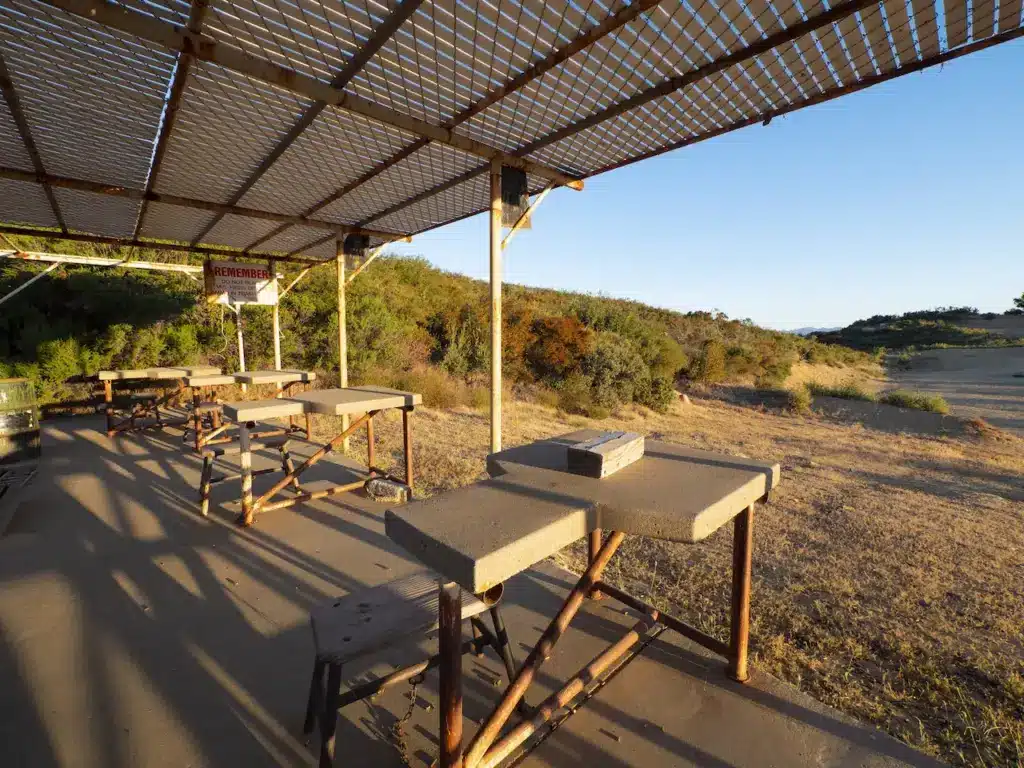
Hauling heavy gear through remote areas and bracing in shooting positions for long durations presents difficulties for aging hunters or those with injuries. Portable shooting benches provide customized seated support:
- Padded gun rests and sandbags steady weapons for enhanced accuracy
- Adjustable firearm slings reduce tremors by bearing weight
- Spinning seat frames allow smooth 360-degree firing angles
- Telescoping legs form a sturdy base on uneven ground
- Optional rifle vice mounts immobilize scopes for fine-tuning
- Transport wheels assist in trekking to blind sites
Specialized hunting chairs offer similar ergonomic benefits:
- Reclining padded seats reduce back strain
- Swivelling armrests support elbows during weapon pivot motions
- Ammo pouches and shooting rail shelves organize gear
- Electronic utility controllers operate calls and gadgets
- Some chairs stand with assistance from gas cylinders
Such adaptive equipment enhances endurance while minimizing upper body tension for better shot placement. This allows disabled participants to enjoy extended hunting sessions alongside able-bodied companions.
All-Terrain Hunting Wheelchairs
Navigating forests or bumpy fields to access hunting areas proves extremely taxing without riding support. Powerful tracked wheelchairs engineered for harsh conditions handle mud, logs, creeks, and steep slopes that stop ordinary mobility chairs. Key features:
- Optional treaded tracks or fat tyres for traction
- The 4-wheel independent suspension absorbs rugged terrain
- Powerful dual motors produce 800+ foot-pounds torque
- Customizable seating, frames, and controls suit user size
- Hydraulic/electric seat lifts reach elevated positions
- Front/rear gear racks haul equipment into remote sites
Such personalized transports allow wheelchair hunters to access backcountry sites and maintain independence beside ambulatory hunting partners. This maintains camaraderie that otherwise fails when one struggles through rough conditions. While expensive, extreme hunting chairs grant remarkable off-road capability.
Electronic Game Calls
Operating hunting game calls requires fine breath control and precise finger coordination to mimic flock noises that draw in birds and animals. This poses challenges for hunters lacking muscular dexterity due to injury or illness.
Voice-activated and remote-control electronic calls provide hands-free operation:
- Bluetooth units sync to phones to play sounds
- Motion-wave triggers activate loud tone sequences
- Call libraries contain species-specific noises (turkeys, ducks, deer)
- Multi-speaker arrays project calls over wider areas
- Rechargeable batteries run for 24+ hour hunts
Such adaptive devices allow hunters to focus energy on firing weapons using their most reliable appendages and range of motion. Automated calling systems enhance success, drawing creatures within firing range. This helps further inclusion for participants dealing with mobility limitations.
Draw Loc Disabled Archery Equipment
Archery builds upper body condition while developing mental discipline through breathing control and pinpoint accuracy. Unfortunately, traditional bows require substantial strength and stamina to pull and hold draw weight at full draw.
This limits archers dealing with injuries, arthritis, and strength deficits. Adaptive release aids and drawing tools allow disabled archers to fire arrows accurately without relying solely on arm and chest muscles.
Draw Lock Archery Releases
These specialized releases offer a “holding” advantage by maintaining tension on a bowstring after an archer reaches full draw:
- Hook straps draw strings easier than hand fingers
- Once engaged, release locks temporarily hold the draw length
- This allows disabled archers to steady aim without muscle fatigue
- Index trigger fingers fire arrows when aligned on targets
- Spike aids screw into bows for easier cocking help
Such assistive devices enable archers to shoot heavier draw weights beyond their natural physical capabilities. This is done by utilizing stronger muscle groups during the pulling phase, and then triggers take over at full draw.
Rope Cocking Aids
Drawing traditional bowstrings requires shoulder, chest, and arm forces that can tax archers with strength or stamina deficits. Custom rope cockers act as mechanical advantage tools to help disabled persons load arrows:
- Durable holsters attach to bows below the grip
- Pulley carabiners slide along the cord for easy draws
- Once fully drawn, the release secures on the string
- After detaching the rope, archers use shorter holds to aim shots
This allows archers to harness other major muscle groups like legs and back to achieve fuller draws. Bows can then fire heavier gauge arrows and tighter arrow groupings downrange.
Crossbows
Crossbows offer an adaptive archery tool for injured shooters through built-in drawlocks that reduce stamina demands. Cocking ropes combined with low-poundage limbs require minimal strength exertion to load arrows. Advantages include:
- Arrow tracks on stocks provide enhanced stability
- Many feature high-powered scopes for aiming assistance
- Tactical stocks allow shooting from fixed positions
- Modern Crossbows achieve long-range accuracy of up to 80 yards
With practice, disabled archers can achieve excellent groupings. Crossbows expand participation for hunters or target shooters who struggle with traditional vertical bow dynamics.
Power Wheelchairs For Outdoor Use
Traditional wheelchairs prove woefully inadequate when navigating anywhere off paved sidewalks and trails. But new generations of rugged, personalized power chairs built for extreme conditions allow wheelchair users to access exciting new adventures. These overbuilt machines feature fat tyres, articulating tracks, suspension, cargo racks, and powered seat lifts for exploring sand, mud, streams, hills, and slopes.
Fat Tire Power Wheelchairs

Hefty fat tyre chairs offer formidable stability traversing fields, wooded parks, and sandy beaches. Low-pressure, chunky tyres up to 6 inches wide provide flotation over loose terrain where narrow wheels dig in. Robust steel frames with full suspension absorb holes and bumps for smoother operation. Typical options include:
- Reclining and tilting seat frames to manage pressure sores
- Adjustable leg and headrests for comfort
- Joystick controls suit limited mobility
- Specialty control switches activated by head, voice, and breath
- Top speeds reaching 6 mph with 25-mile ranges
Fat tyre power chairs grant all-conditions local exploration beyond visiting manicured paved trails. This expands wheelchair recreation opportunities.
Tank Track Power Chairs
For covering rocky creeks, deep mud, and snow, extreme tank track chairs offer unstoppable traction.
Articulated tracks engineered for military vehicles propel across 16+ inch obstacles while flexible frames twist up to 45 degrees. This allows passage through rugged wooded terrain alongside able-bodied companions. Chassis options include:
- Powerful dual motors generating 1200+ foot-pounds torque
- Higher weight capacities suiting large/tall riders
- Hydraulic/electronic seat lifts reach overhead objects
- Storage racks haul gear/accessories like oxygen, tent
- Electronic tilt, recline, and leg rests for comfort
- Custom control panels suit limited mobility
Such personalized transports grant remarkable independence and capability for exploring off-road environments barely accessible to standard wheelchairs. This freedom opens new recreation frontiers.
FAQs
Where can I find hunting accessories for shooters with mobility impairments?
Many mainstream hunting retailers like Cabela’s, Bass Pro Shops, and Gander Outdoors carry specialized shooting accessories for disabled sportsmen, including shooting sticks, crossbow cocking devices, gun vices, electric limb drivers, and more. There are also dedicated online retailers like Adaptive Outdoorsman, Freedom Hunter, and Be Adaptive, specializing in accessories that adaptive hunters rely on in the field. These resources help customize gear for your physical capabilities.
What ATV accessories are available for transporting mobility-limited hunters?
Several manufacturers offer ATV solutions for disabled hunters, including track chair lifts, wheelchair racks, gun/bow holders, and handicap-accessible trailers. Be Adaptive makes power-lift trailers that carry track wheelchairs with extensive anchoring tie-downs. Top Gear Attachments produces heavy-duty power lifts that attach to ATV rear racks for loading 300-pound wheelchairs. Kolpin Stronghold gun boots and bow carriers safely transport hunting weapons.
How much do extreme wheelchairs capable of extreme off-roading cost?
High-performance all-terrain power hunting and exploration chairs run from around $10,000 to $26,000, depending on engine power, customization, and accessories. Basic models like the MAX Off Road Chair start around $10k. Heavy-duty military-grade unlimited terrain Trackchair models powered by 39hp engines run up to $26k. Mid-level Action Trackchairs offer a balance of capabilities. Evaluate your frequency of use and desired performance when budgeting expenses.
What are electronic draw locks, and how do they benefit archers?
Electronic draw locks allow compound bows to stay cocked at full draw position until archers are aligned for accurate shots on targets, reducing shake. This assists archers who lack the strength to draw bowstrings by hand. Portable handheld versions also provide a power advantage when cocking bows. Push button trigger releases, then fire arrows up to 30% faster. This reduces wobble for more consistent accuracy over long shooting sessions.
Which body positions benefit from shooting rails and stands?
Stable shooting platforms shine for participants recovering from conditions affecting the back, hip flexors, knees, or ankles who cannot kneel or stand securely. They also assist quadriplegics, MS patients, and those missing/impaired limb function. Key benefits include reducing upper body strain, steadying weapons for precision aiming, integrated ammo storage, and swivel mobility. This expands inclusion for hunters and marksmen across many health situations.
What training resources exist for learning to use adaptive equipment?
Beyond equipment user manuals, many nonprofit organizations like American Wheelchair Bowhunters, Adaptive Sports USA, and Move United offer beginner education for safely using specialized gear. Local adaptive recreation centres provide hands-on instruction tailored to equipment and locations available in your region. Attending adaptive sporting events offers opportunities to evaluate tools while connecting with athletes willing to share expertise and training tips.
Where can I find grants and funding assistance for purchasing adaptive gear?
Several organizations like Wheel to Walk, United Disability Services, Limbs for Life, and Challenged Athletes Foundation have grants to subsidize adaptive recreation equipment expenses. Local VFW and Elks Lodge chapters award recreation funds to eligible veterans and community members. Crowdfunding sites enable outreach for financial support, dispersing the burden. Saving via tax-advantaged ABLE accounts provides another funding mechanism for those qualifying based on disability status.
Conclusion
Innovations in adaptive sporting equipment now allow more people with physical challenges to enjoy outdoor recreation opportunities alongside able-bodied friends and family. Configurable fishing tools, archery gear, hunting accessories, and extreme wheelchairs adapt to individual strength limits and range of motion issues. Such specialized technologies represent the power of thoughtful, inclusive design.
As engineers expand their understanding of accessibility obstacles, smarter adaptive equipment will continue empowering mobility-impaired outdoor enthusiasts. The future promises collaboration technologies, allowing people of all abilities to venture into nature together.
